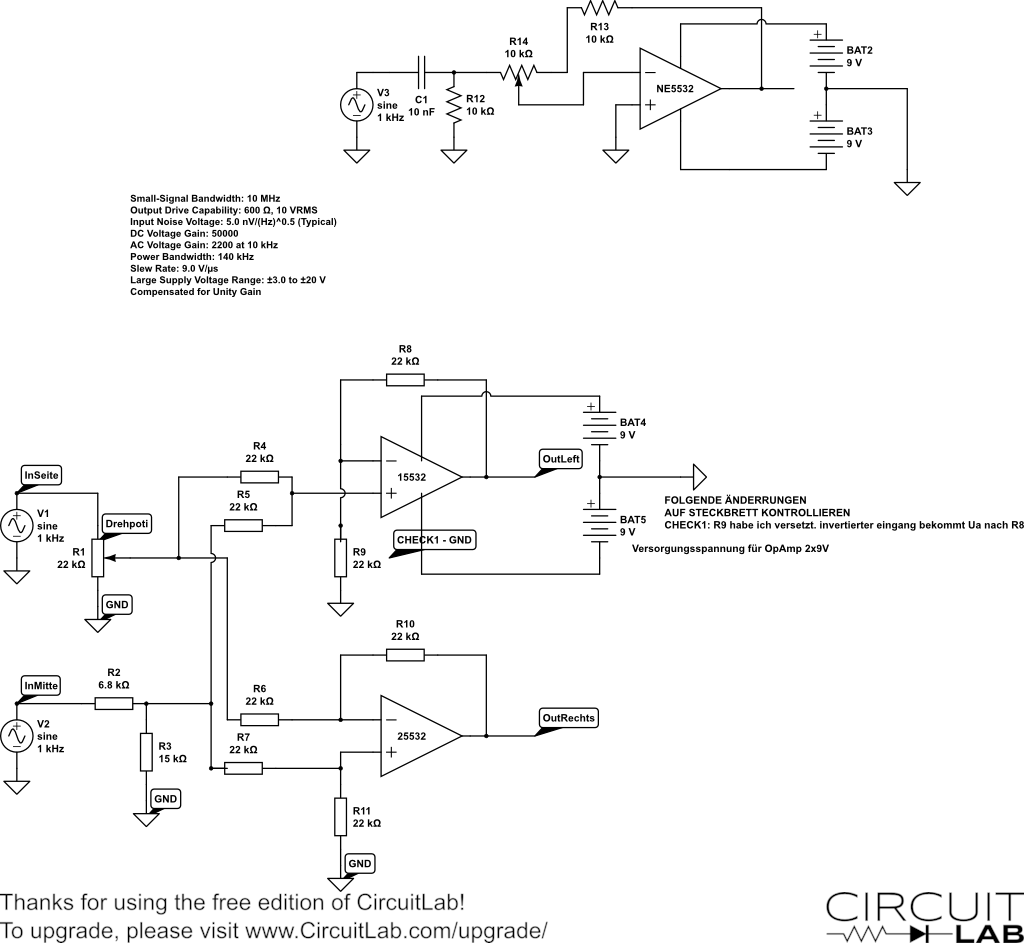Hi Travis! Nope. Two inputs and two outputs. The inputs are stereo from modulation effects. So I have to duplicate the circuit and share dual pots.
I've found this interesting topic:
http://guitar-fx-layouts.42897.x6.nabble.com/Stereo-Overdrive-for-Synth-td34080.html
I would like to follow the approach cylens suggests. I would need to do the next operations:
1) L+R
2) L-R
3)(L-R)/2
4)(L-R)/2
It doesn't look too involve to me, but that's beyond my knowledge. Anyone who could help?
I found this:

from
https://www.gearslutz.com/board/geekslutz-forum/1208536-l-r-mid-side-wiring.htmlThe above circuits it's supposed to do the L+R and L-R but I don't know if it is suitable for guitars. I would really appreciate if someone could verify this. In that case the (L+R) / 2 and (L-R) / 2 would be the remaining operations.
Thank you guys.